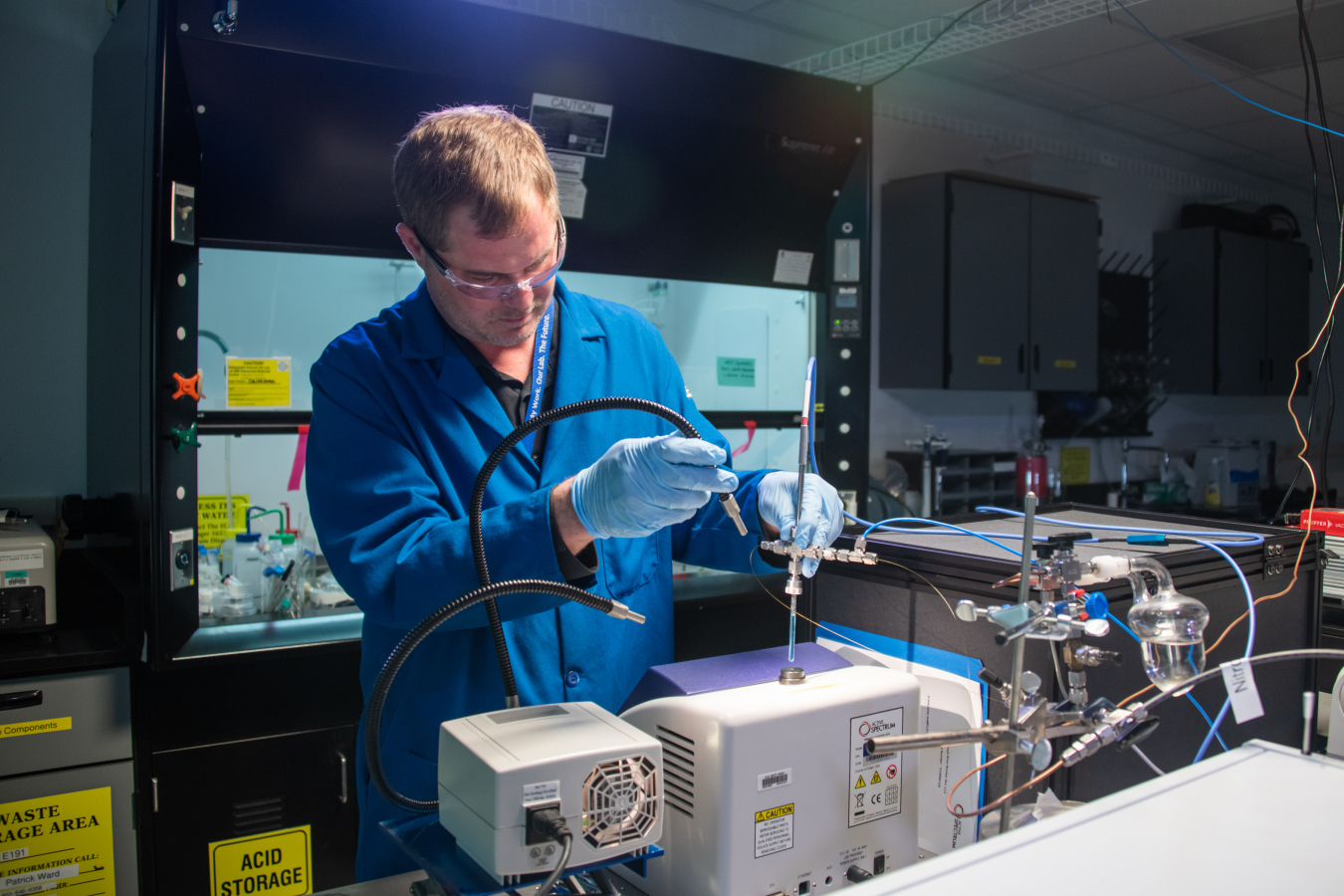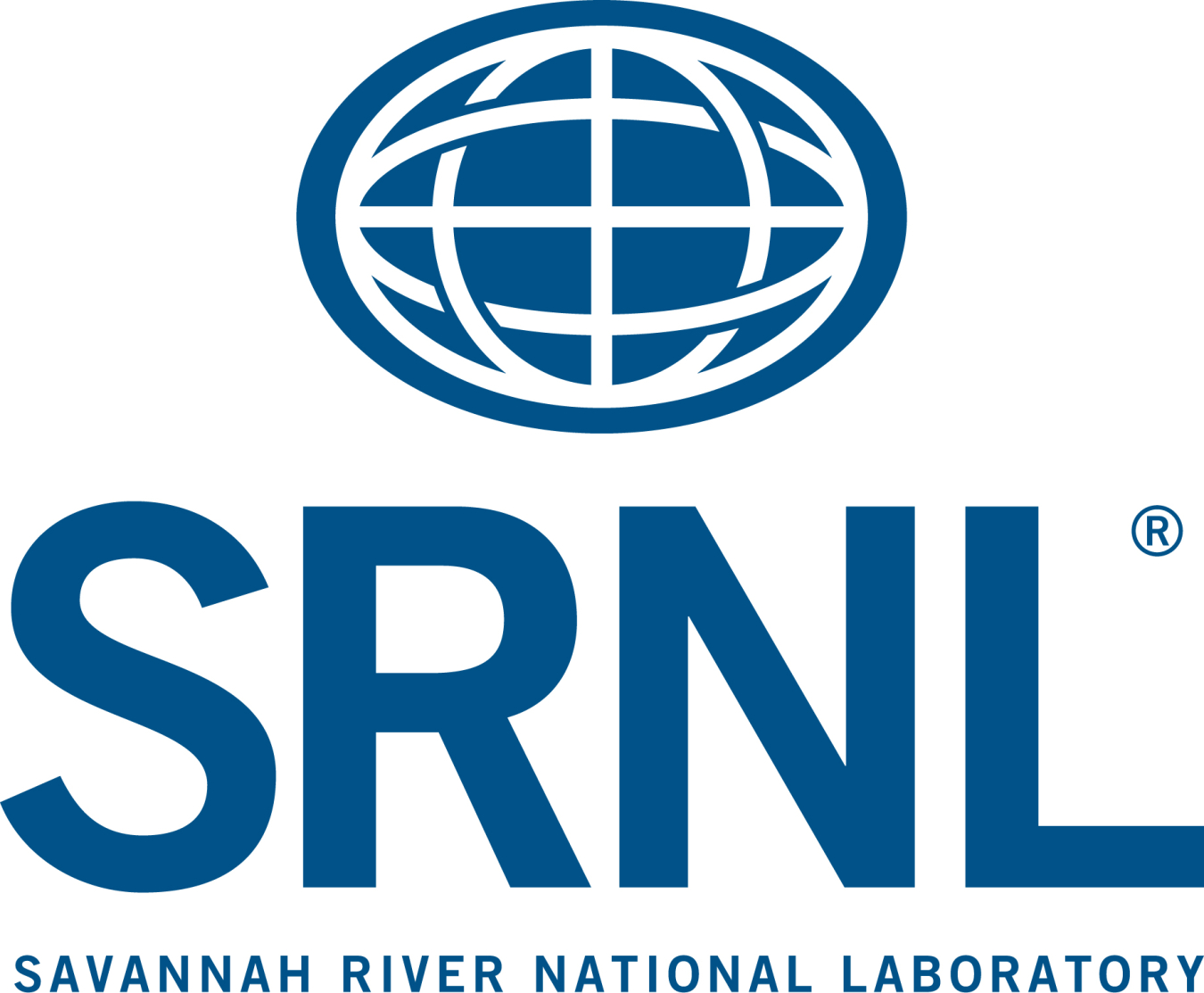A national laboratory at the Savannah River Site that supports advancements in the EM cleanup mission has been awarded $3 million to further fundamental research capable of enabling new pathways for hydrogen storage and production technologies.
Office of Environmental Management
September 13, 2022
Savannah River National Laboratory (SRNL) Principal Scientist Patrick Ward is leading a new collaborative research effort funded by a $3 million award from the DOE Office of Basic Energy Sciences. An SRNL employee of more than 10 years, Ward began his career at the laboratory as a graduate intern and transitioned to a postdoctoral fellow. His area of expertise is in energy storage and conversion. Ward has developed an array of hydrogen storage materials, thermochemical energy storage material and novel photovoltaic and battery concepts.
AIKEN, S.C. – A national laboratory at the Savannah River Site that supports advancements in the EM cleanup mission has been awarded $3 million to further fundamental research capable of enabling new pathways for hydrogen storage and production technologies.
The award to Savannah River National Laboratory (SRNL) by the Office of Basic Energy Sciences within the DOE Office of Science is part of the Department’s recent announcement of awarding $540 million for university- and national laboratory-led research into clean energy technologies and low-carbon manufacturing to transform energy production and cut emissions.
SRNL’s collaborative research effort is led by laboratory researcher Patrick Ward, Ph.D.; Yury Gogotsi, Ph.D., of Drexel University in Philadelphia; Kah Chun Lau, Ph.D., of California State University, Northridge; and Paul Weiss, Ph.D., of University of California, Los Angeles.

“The team will explore the fundamental nature of hydrogen interactions with MXene materials to gain foundational insight into how to develop advanced materials for hydrogen storage and production,” Ward said. “By understanding the underlying behavior of hydrogen in these systems, materials can be strategically designed to possess the desired properties needed to advance clean energy technologies.”
MXenes are a class of two-dimensional inorganic compounds, consisting of layers of transition metal carbides, nitrides or carbonitrides.
The SRNL-led fundamental research supports underpinning aspects of the three DOE Energy Earthshots to set goals for improvements in clean energy technologies. This research is particularly suited for addressing the Hydrogen Shot initiative, which seeks to reduce the cost of clean hydrogen by 80% to $1 per 1 kilogram in 1 decade ("1 1 1") and unlock new markets for hydrogen.
Managed and operated by contractor Battelle Savannah River Alliance, SRNL is a DOE multi-program research and development center that provides solutions to the nation’s environmental, nuclear security, nuclear materials management, and energy manufacturing challenges.
To receive the latest news and updates about the Office of Environmental Management, submit your e-mail address.

